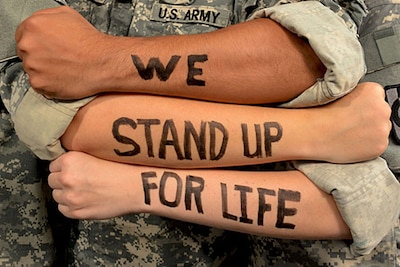WASHINGTON, Sept. 12, 2017 — The Defense Department has
initiated operations in Florida in response to Hurricane Irma and also
continued response operations in the Virgin Islands and Puerto Rico, according
to a DoD statement issued today.
DoD expects to complete evacuating U.S. citizens from St.
Martin and is coordinating the evacuation of U.S. citizens from the British Virgin
Islands, the statement said. Joint Task Force-Leeward Islands is arriving in
the eastern Caribbean today to start providing humanitarian assistance, to
include water, sanitation, logistics support, movement of relief personnel and
humanitarian commodities.
DoD Hurricane Irma Response Details
-- There are approximately 10,000 DoD personnel supporting
response operations in the U.S. Virgin Islands and Puerto Rico.
-- The amphibious assault ship USS Kearsarge, the 26th
Marine Expeditionary Unit, the amphibious assault ship USS Wasp, the dock
landing ship USS Oak Hill, and dry cargo ship USNS McLean are conducting relief
operations in the U.S. Virgin Islands. The SS WRIGHT is loading Federal
Emergency Management Agency containers and is scheduled to depart for St.
Thomas.
-- Marines from the 26th MEU battalion landing team
conducting logistical and support operations in the U.S. Virgin Islands.
-- The U.S. Army Corps of Engineers is assessing the
Schneider Regional Medical Center – the principal medical facility on St.
Thomas, U.S. Virgin Islands. The Corps of Engineers is also coordinating the
shipment of a 750-kilowatt generator to St. Thomas to assist in restarting the
island's power plant.
-- U.S. Transportation Command will lift the 602nd Area
Medical Support Company to St. Thomas with primary and emergency patient care
capability.
Florida Operations
-- There are approximately 20,700 DoD personnel supporting
response operations in the eastern United States.
-- U.S. Northern Command is postured to conduct relief
operations from the sea with aircraft from the USS Abraham Lincoln, USS
Farragut, USS Iwo Jima, USS New York, and the USS San Jacinto. The Farragut
will arrive off the Florida coast tomorrow. The Lincoln’s helicopters airlifted
supplies to forces opening Marathon Airport in the Florida Keys.
-- The Army has High Water Trucks en route to Florida from
Fort Bragg, North Carolina, and fuel and supplies will be moved to search and
rescue base airfields.
-- Army Corps of Engineers power teams, debris removal
teams, temporary roofing teams and port survey personnel are in place in
Florida and Georgia. The Corps of Engineers and the Coast Guard are working to
reopen ports -- focusing on Port Everglades and Tampa.
-- The Defense Logistics Agency is developing joint
solutions to support Florida first responder fuel requirements.
Army Operations
-- According to Army officials, the current Total Army
response for Hurricane Irma is more than 17,600 soldiers and U. S. Army Corps
of Engineers civilians in the U.S. Virgin Islands, Puerto Rico and the
continental United States.
-- The Army has 38 aircraft, more than 740 trucks, and more
than 80 generators already committed to relief efforts. The Army has more than
100 aircraft, almost 600 generators, 150 boats, and more than 3,200 trucks on
standby to support response efforts if called upon.
-- Army National Guard soldiers from Florida, South
Carolina, North Carolina, Puerto Rico and the Virgin Islands are currently on
State Active Duty status and are either responding, or prepared to respond to
each governor’s priorities. Additionally, National Guard units in Florida,
Alabama, Georgia, and South Carolina are conducting routine inactive duty
training, which they will utilize to prepare for a Hurricane Irma response, if
required.
-- The Corps of Engineers is already working in the Virgin
Islands and Puerto Rico to assist with power restoration efforts and have teams
on stand-by to assist in Florida if/when needed. The Corps is also monitoring
conditions at the Herbert Hoover Dike (Lake Okeechobee) and will continue to
provide updates.
-- Army Reserve officers are assigned with FEMA Regions II,
IV, and V Headquarters to assist with providing expert military advice on storm
response efforts.
-- Fort Jackson, South Carolina, is providing shelter to 128
personnel displaced by the hurricane and are still accepting persons seeking
shelter.
-- The U.S. Army Corps of Engineers has six divisions and
six districts activated to support federal response operations, with more than
400 deployed personnel at key response nodes and 158 personnel manning key
communication nodes.








